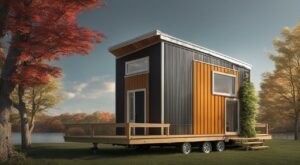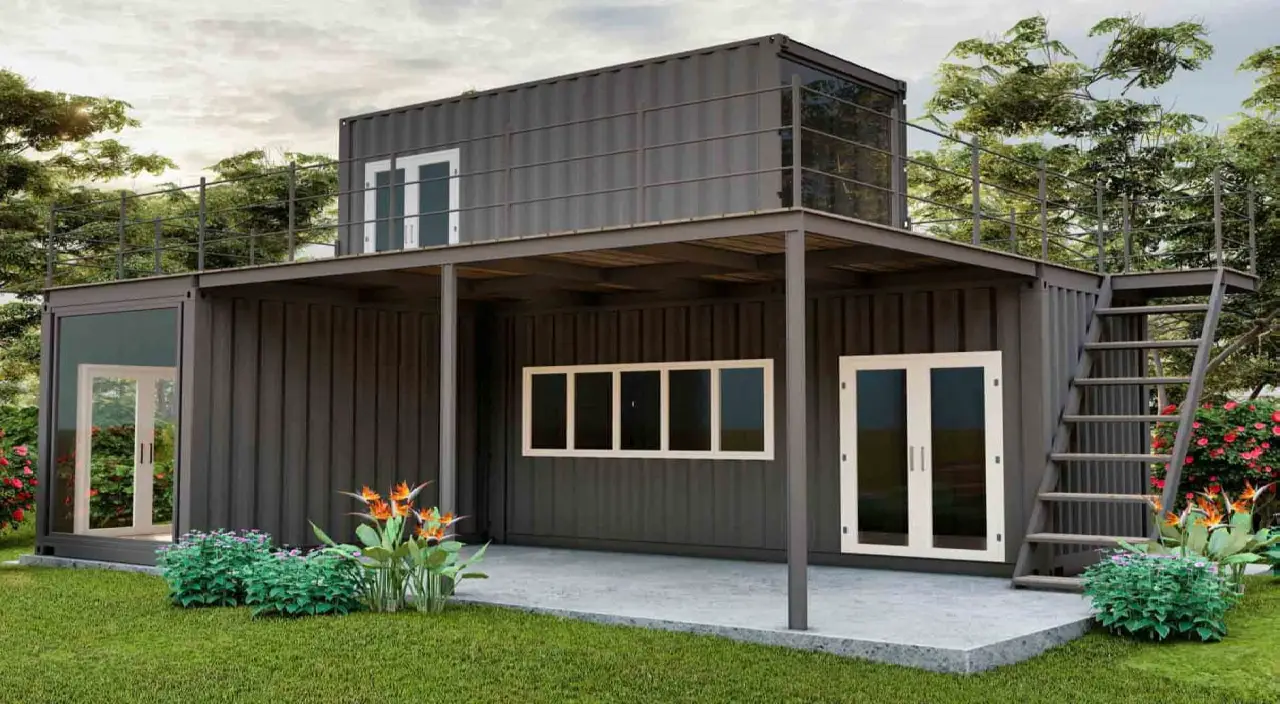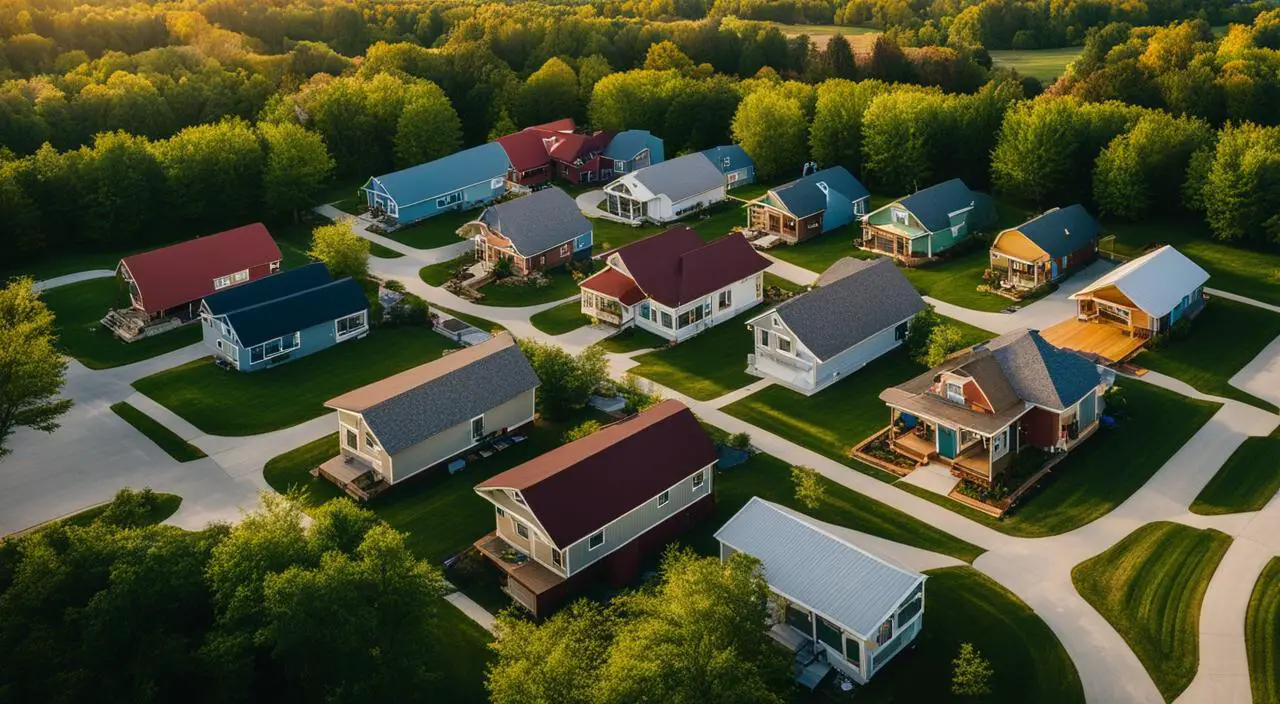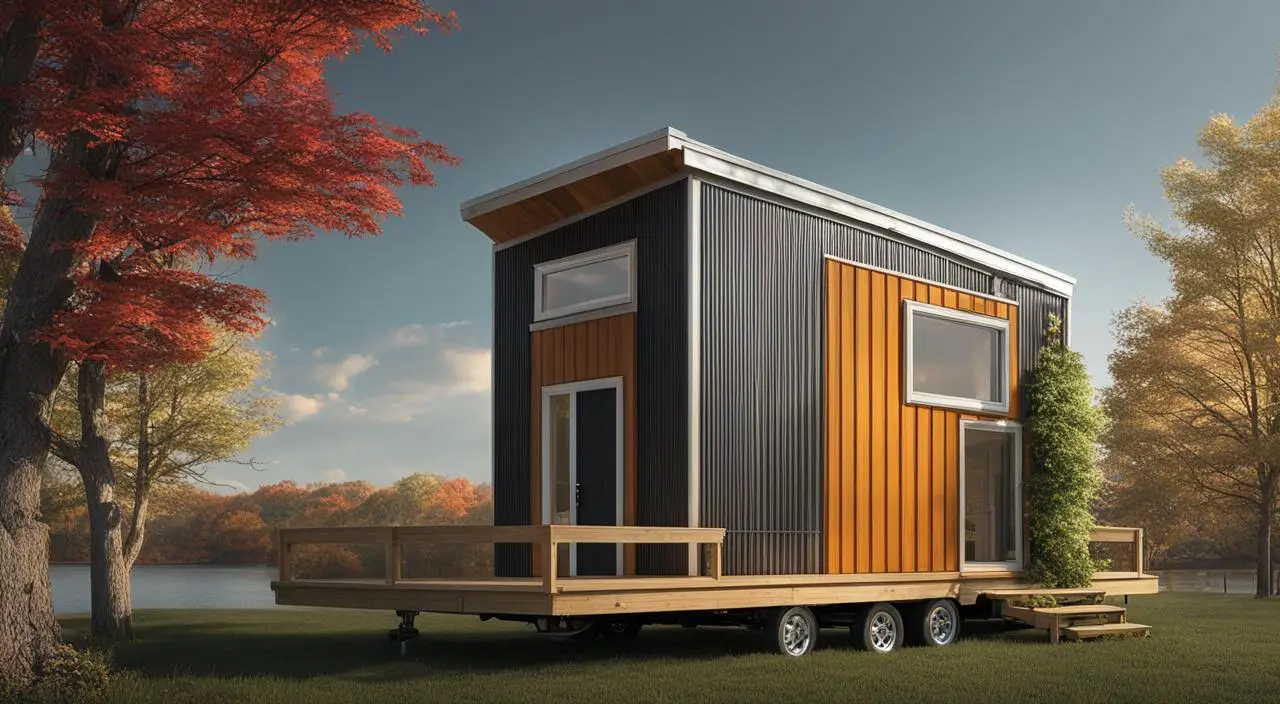Your cart is currently empty!
Tiny House Laws Colorado: A Friendly Guide
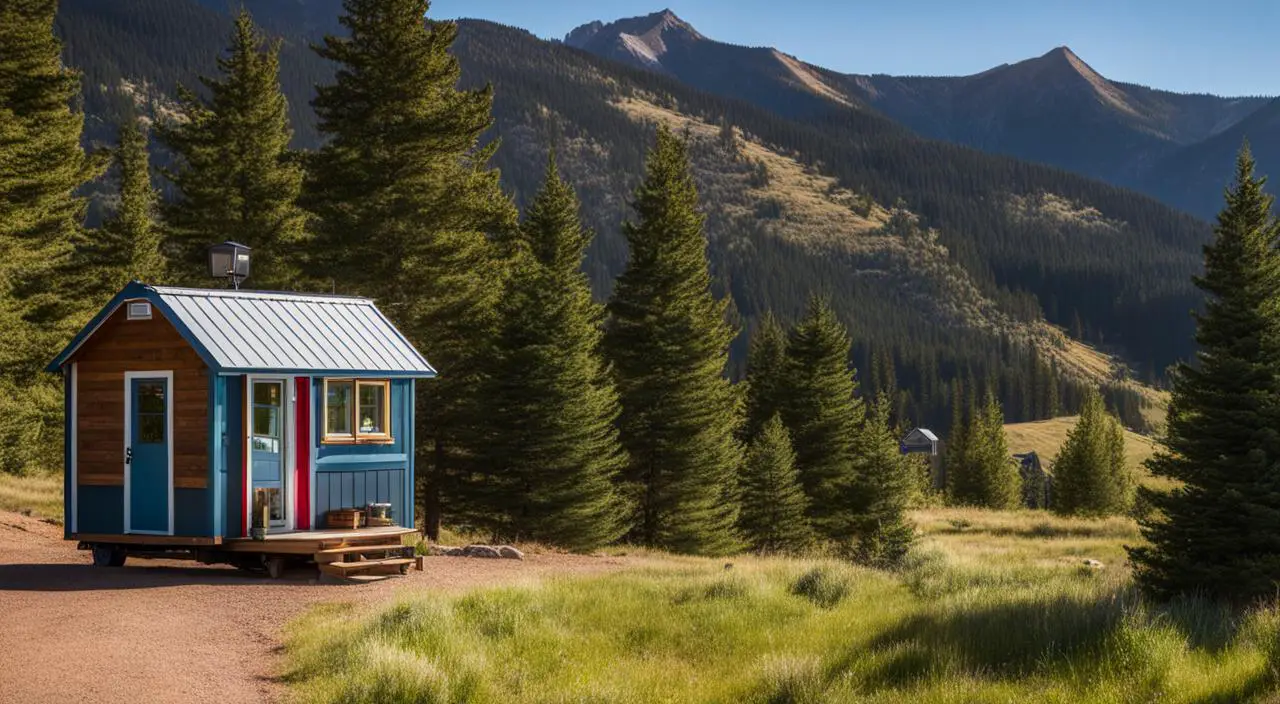
Affiliate Disclaimer: This post may contain affiliate link or links
If you’re considering building or living in a tiny house in Colorado, it’s important to understand the laws and regulations that apply to these unique homes.
Contents
Tiny houses are becoming increasingly popular in Colorado, but they are subject to specific building codes and zoning laws that must be followed to ensure legal compliance.
This guide will provide you with a comprehensive overview of the tiny house laws in Colorado, including zoning laws, building codes, permit requirements, and more.
You’ll learn about the different placement options available for tiny homes, and the specific regulations that govern each one.
By understanding these laws and regulations, you’ll be able to make informed decisions about your tiny house project and ensure that you’re operating within the bounds of the law.
Zoning Laws for Tiny Houses in Colorado
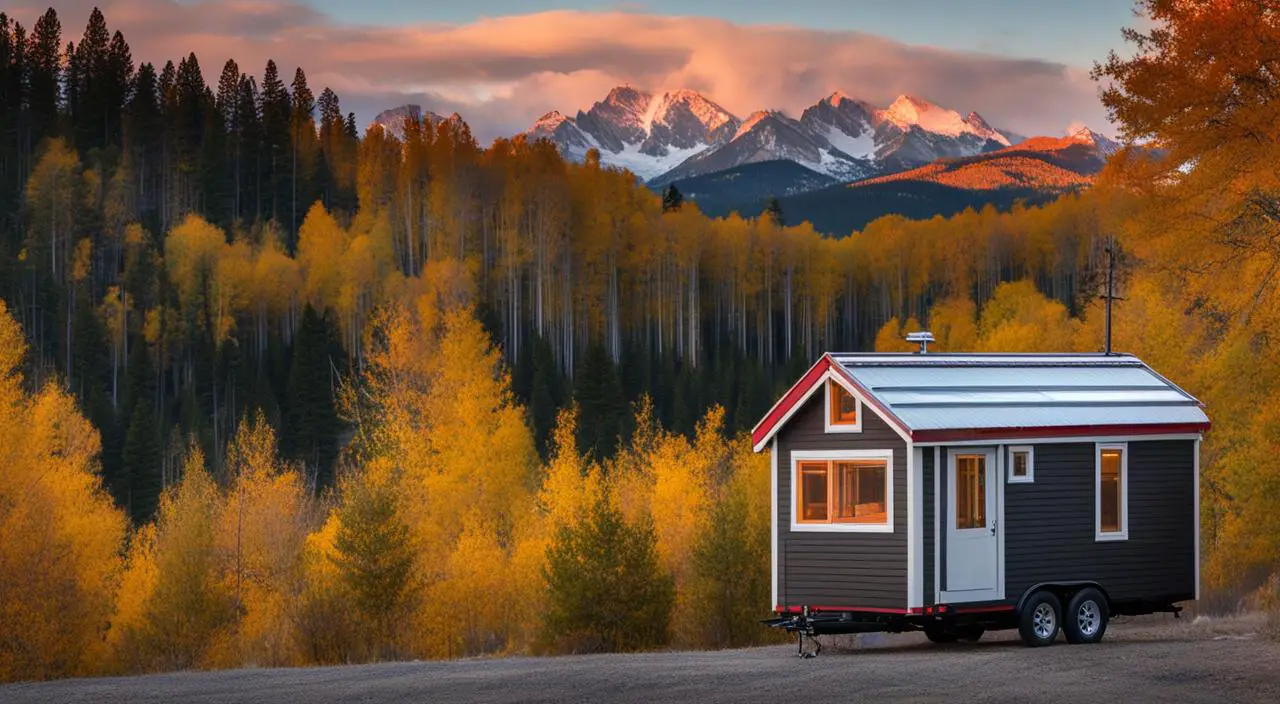
When it comes to building a tiny house in Colorado, it is essential to understand the zoning laws that apply to the area you plan to place your home.
Zoning laws are local regulations that control the use of land and buildings within a particular jurisdiction. Colorado has no state-level zoning laws, but each municipality has its zoning regulations.
These regulations define land use, occupancy standards, setback requirements, and other restrictions for buildings in the area.
The zoning laws in Colorado also determine whether a tiny house can be placed on a particular plot of land.
According to Colorado zoning regulations, a tiny house must typically comply with the same land use and building codes as standard-sized homes.
However, zoning laws can be more restrictive for tiny houses, with many areas prohibiting them altogether.
It is crucial to check your local municipality’s zoning laws to ensure that your tiny house complies with all requirements.
| Zoning law | Description |
|---|---|
| Land use restrictions | Regulations that determine how land can be used and developed in a specific area. These restrictions can include the type of buildings allowed and how much of a plot can be built upon. |
| Occupancy standards | Rules that determine how many people can live in a home based on the square footage of the property. |
| Setback requirements | Regulations that require buildings to be set back a certain distance from the property’s edge or neighboring buildings. |
In summary, complying with zoning laws is an essential aspect of building a tiny house in Colorado.
It is essential to research local regulations to ensure your tiny home complies with all applicable zoning laws, land use restrictions, occupancy standards, and setback requirements.
Building Codes for Tiny Houses in Colorado
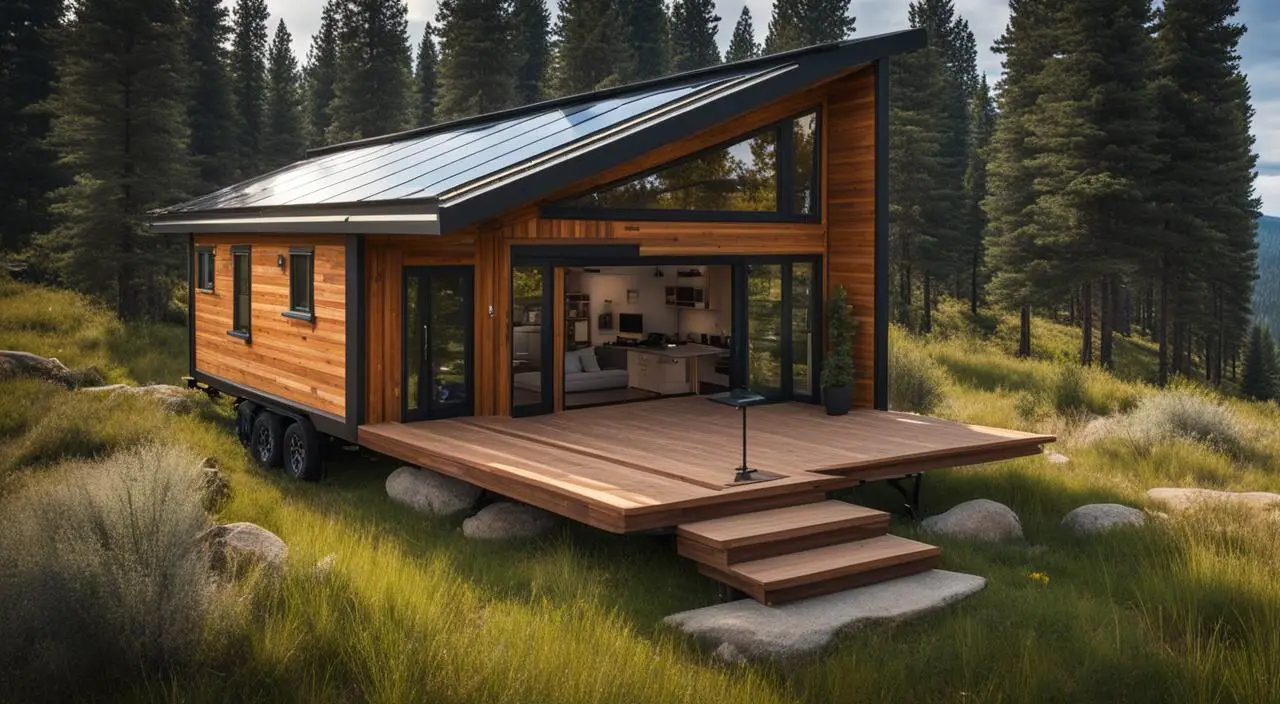
When it comes to building a tiny house in Colorado, it’s essential to understand the building codes and regulations that apply to ensure your project is safe and compliant.
Colorado has adopted the International Residential Code (IRC) as its standard, with additional specific requirements for tiny homes.
The building codes for tiny houses in Colorado cover various aspects, including:
| Requirement | Description |
|---|---|
| Foundation | It must be constructed on a permanent foundation, which can be a slab, crawl space, or basement. |
| Loft | If the tiny house has a loft, it must meet specific safety standards, including a minimum headroom of 6 feet 8 inches and a minimum floor area of 35 square feet. |
| Plumbing | The tiny house must have a freshwater system, a wastewater system, and a heating system. |
| Electrical System | It must meet the National Electric Code (NEC) and include a minimum of one 20-amp circuit. |
| Fire Safety | The tiny house must have smoke detectors and a fire extinguisher. |
Other requirements for tiny house construction in Colorado include:
- The tiny house must comply with the minimum square footage requirements set by the state.
- The tiny house must be designed and built by a licensed and certified contractor.
- The tiny house must undergo a series of inspections to ensure compliance with all building codes before it can be occupied.
Overall, it’s crucial to work with a qualified contractor who understands the unique requirements for tiny house construction in Colorado and can help ensure your project is safe and compliant.
Permits for Tiny House Construction in Colorado
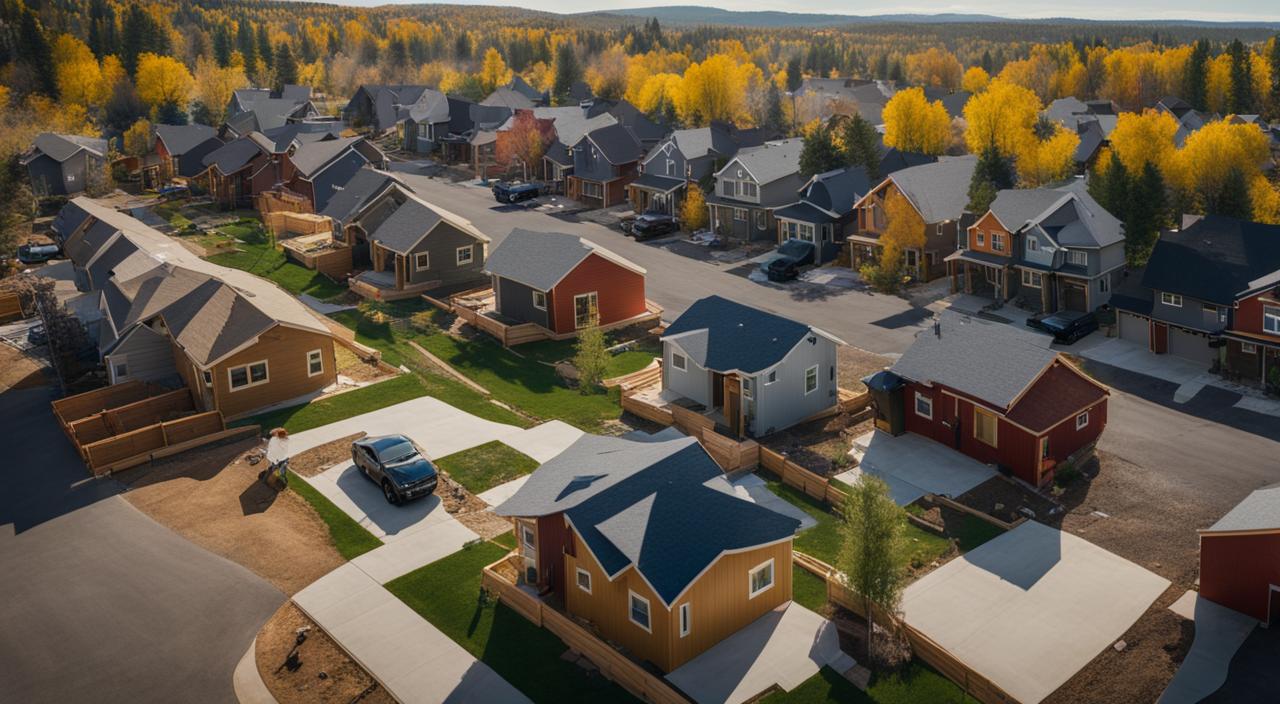
Building a tiny house in Colorado requires complying with the relevant permits and regulations.
To ensure a legal and compliant project, obtaining the necessary permits and following the required documentation and inspections are crucial.
Before starting the construction process, the homeowner must obtain the necessary permits from the local building department. These permits include:
- Building permit
- Electrical permit
- Plumbing permit
- Mechanical permit
Each of these permits is necessary to ensure that the tiny house is constructed according to the standard building codes and regulations.
Failure to obtain the necessary permits can result in legal and financial consequences.
The Colorado tiny house construction regulations require that the homeowner submit specific documentation along with the permit application. These documents include:
- Building plans designed by a licensed architect or engineer
- Site plan showing the location of the tiny house on the property
- Foundation design, including the type and size of the foundation
- Utility plan showing the water, electrical, and sewage connection to the tiny house
After submitting the required documentation and obtaining the necessary permits, the homeowner must then undergo inspections at specific stages of the construction process.
These inspections ensure that the tiny house meets safety and structural standards and that the construction complies with the relevant building codes.
It is essential to note that the cost of obtaining permits and complying with regulations may vary depending on the location and size of the tiny house.
However, by obtaining the necessary permits and following the regulations, the homeowner can ensure the safety and legality of their tiny home construction project.
Tiny House on Wheels Regulations in Colorado

Those interested in building a tiny house on wheels in Colorado must be aware of the unique regulations and legal requirements that apply to mobile tiny homes.
Legal Requirements
Colorado defines a “Recreational Vehicle” (RV) as a vehicle that is built on a single chassis, has a gross vehicle weight of less than 20,000 pounds, is designed to be self-propelled.
Permanently towable by a light-duty truck, and is intended for temporary living quarters for recreational, camping, travel, or seasonal use.
According to the Colorado Division of Housing, a tiny house on wheels can be classified as an RV if it meets the above criteria.
However, if the tiny house on wheels is intended to be used as a permanent residence, it must comply with local zoning and building codes for permanent dwellings.
RV Parks and Campgrounds
One option for legal placement of a tiny house on wheels is to park it in an RV park or campground. Colorado has numerous RV parks and campgrounds that allow tiny houses on wheels.
However, it is important to review the rules and regulations for each specific location to ensure compliance with their expectations.
Land Use
Land use restrictions may limit the areas where a tiny house on wheels can be parked or used as a primary residence.
Before choosing a location to park a tiny house on wheels, it is important to research and understand the applicable land use regulations and zoning laws in the area.
Utility Connections
Tiny houses on wheels may face challenges with utility connections, as they are typically not equipped with traditional plumbing and electrical systems.
Those interested in building a tiny house on wheels in Colorado must research the necessary permits and requirements for installing utility connections and septic systems.
Note: It is important to consult with local zoning officials and building inspectors to ensure compliance with all applicable regulations when constructing a tiny house on wheels in Colorado.
Minimum Square Footage Requirements for Tiny Houses in Colorado
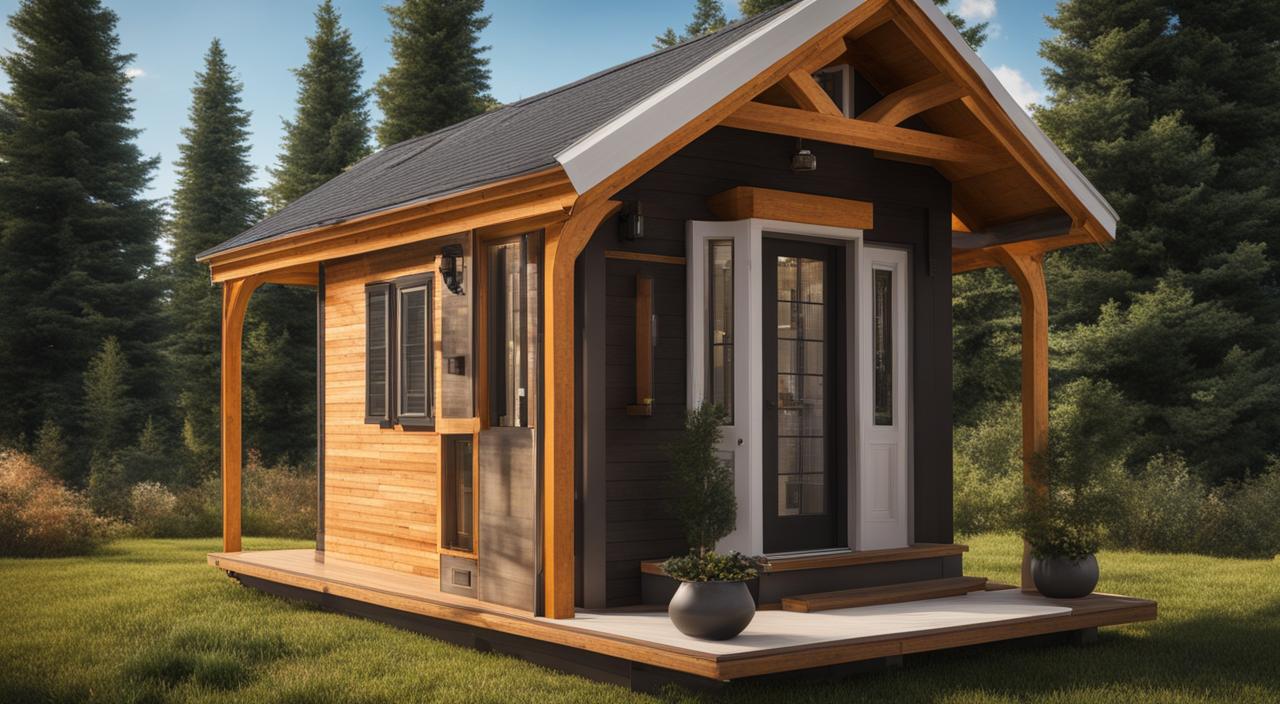
Colorado is among the states that have adopted minimum square footage requirements for tiny houses.
According to Colorado tiny house minimum square footage regulations, a tiny house must have a minimum of 120 square feet for it to be considered legal.
The square footage is calculated from the exterior walls, and loft space is included only if it has a minimum height of 5 feet and meets all safety requirements.
It is essential to note that minimum square footage requirements for tiny houses Colorado differ depending on the zoning laws of the specific locality where the tiny home is to be built.
Some municipalities may have different minimum square footage requirements, so it’s crucial to research the local zoning laws before embarking on a tiny house construction project.
Despite the minimum square footage requirements, Colorado allows for creative and non-traditional building designs that can meet the safety requirements set by the state.
By working with a professional builder, one can design a tiny house that meets the minimum square footage requirements while still incorporating unique design elements.
Below is a table showing additional minimum square footage requirements for tiny homes in Colorado:
| Location | Minimum Square Footage |
|---|---|
| Boulder | 150 sq. ft. |
| Lyons | 220 sq. ft. |
| Walsenburg | 150 sq. ft. |
It’s essential to note that the minimum square footage requirements for tiny homes in Colorado are subject to change.
Therefore, it’s advisable to keep up with updates and changes in tiny house regulations for a successful and compliant tiny house project.
Tiny House Living Legality in Colorado
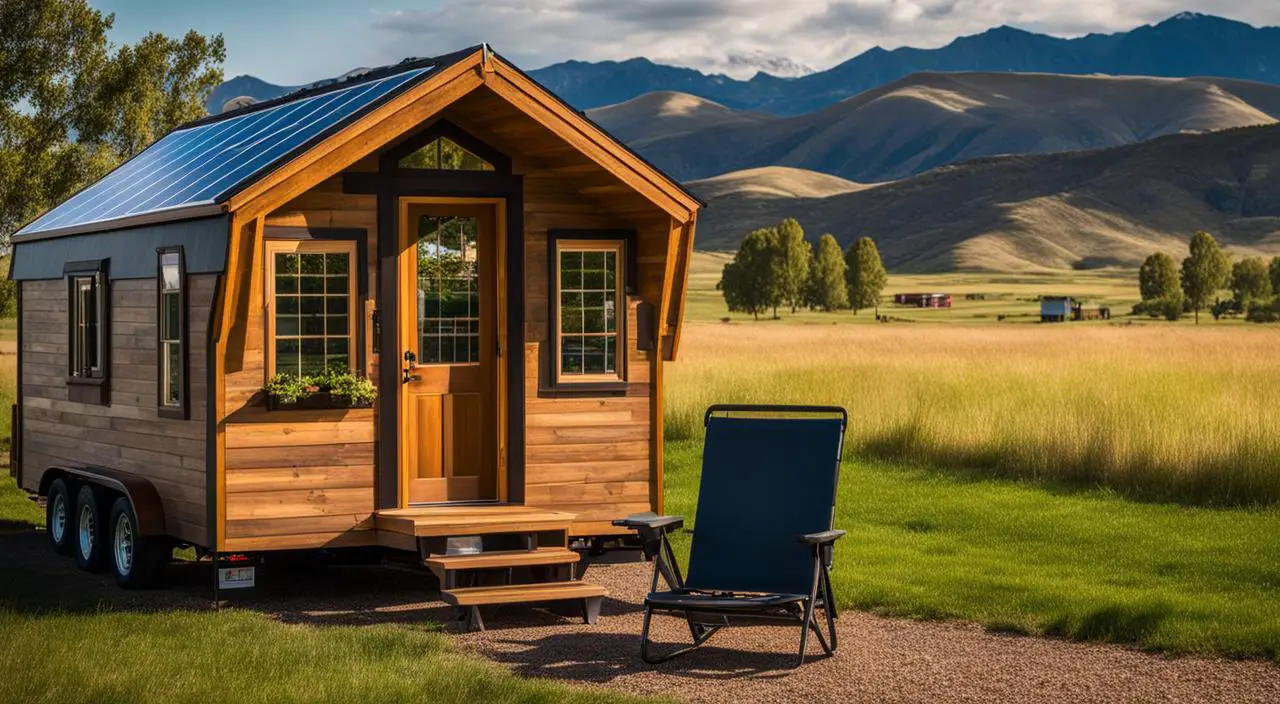
Living in a tiny house in Colorado offers an opportunity to simplify your life, save money, and minimize your carbon footprint.
However, before you start building your dream tiny home, it’s crucial to understand the legal requirements and regulations related to tiny house living in Colorado.
According to Colorado law, a tiny house is considered a dwelling unit, and the applicable regulations are found in the International Residential Code (IRC) and the International Building Code (IBC).
Therefore, tiny house builders and owners must comply with the same regulations as traditional home builders and owners.
Colorado tiny house living regulations require that a tiny home must have a permanent foundation and meet the minimum size standards for a single-family dwelling.
The minimum square footage required for a tiny house in Colorado is 120 square feet, with at least one room of no less than 70 square feet.
However, Colorado does not have a statewide building code, and each municipality or county sets its own regulations. As a result, the requirements for living in a tiny house vary widely across the state.
For instance, some areas may require that tiny houses be located on a piece of private property that meets minimum square footage requirements.
While others may permit tiny homes on wheels as long as they are parked on a designated spot.
Additionally, zoning regulations may affect where tiny houses can be placed, and there may be specific requirements for utility connections and sewage disposal.
It’s important to research the regulations specific to your area before building or purchasing a tiny home and to consult with local officials to ensure compliance with all requirements.
“Living in a tiny house can be a fulfilling and rewarding experience, but it’s crucial to do your due diligence and ensure that your tiny home complies with all applicable laws and regulations.
Some municipalities in Colorado have recognized the growing popularity of tiny homes and have worked to create more lenient regulations to accommodate tiny house living.
For example, in 2019, the city of Durango passed an ordinance allowing tiny homes on wheels to be parked in backyards for up to two years as long as they meet certain requirements.
Despite efforts to make tiny house living more accessible, it’s crucial to remember that living in a tiny home is not legal in all parts of Colorado.
Some counties and cities have explicitly prohibited tiny homes, and building or living in an illegal tiny home may result in fines or legal consequences.
Therefore, it’s essential to research the regulations and zoning laws in your area and consult with local officials before beginning your tiny house project.
With careful planning and adherence to all applicable laws and regulations, you can enjoy the many benefits of tiny house living in Colorado.
Tiny House Community Regulations in Colorado
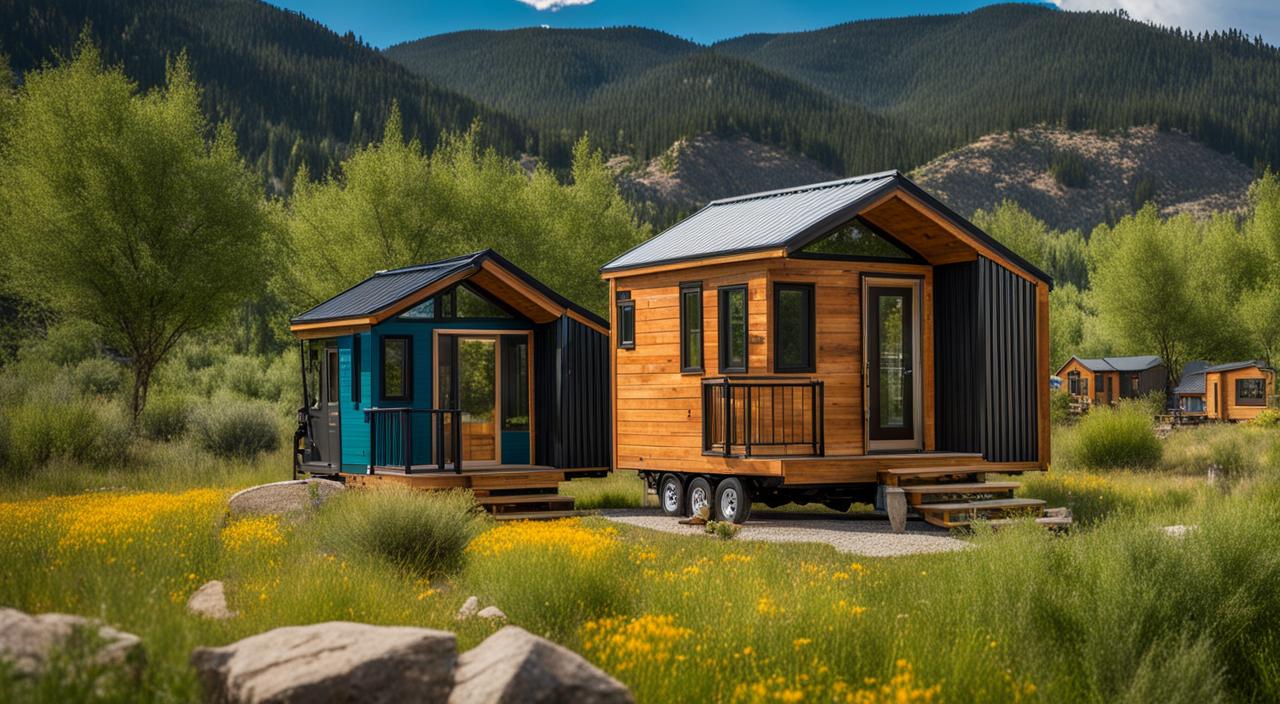
While tiny house communities offer an alternative solution to affordable housing, they are subject to regulations in Colorado.
Additionally, zoning laws and building codes must be followed and permits must be obtained to establish a tiny house community.
Therefore, it is essential to consult with local officials and industry professionals before embarking on a community project.
Tiny house community regulations in Colorado vary by location.
For instance, in some areas, tiny houses may only be built as accessory dwelling units or as part of an eco-village or RV park. In contrast, others may have specialized zoning ordinances for tiny home communities.
For example, the River View at Cleora Community in Pueblo, Colorado, has established specific guidelines, including a minimum square footage requirement of 220 square feet and a maximum of 600 square feet, as well as requirements for water and sewer connections.
Additionally, Colorado tiny house community laws may set occupancy restrictions on the number of people who can live in a tiny home per property.
For example, in El Paso County, zoning laws permit one tiny home per lot as an accessory dwelling unit, which cannot exceed more than three occupants.
It’s crucial to understand such restrictions in advance to avoid potential legal issues later on.
Regulations for tiny house communities in Colorado may also include community guidelines such as rules regarding shared spaces, parking regulations, and noise restrictions.
It is essential to communicate such guidelines effectively to the community members to ensure a comfortable and harmonious living environment.
“The River View at Cleora Community in Pueblo, Colorado, has established specific guidelines, including a minimum square footage requirement of 220 square feet and a maximum of 600 square feet, as well as requirements for water and sewer connections.”
Exploring Tiny House Options in Colorado

When it comes to tiny house living in Colorado, there are various options that one can consider.
Whether a resident prefers to live in a community or standalone, there are different ways to incorporate tiny houses into their lives.
Joining Existing Tiny House Communities
One option is to join an existing tiny house community.
There are several tiny house communities that are already established throughout Colorado, such as the WeeCasa Tiny House Resort in Lyons and the Peak View Park in Woodland Park.
These communities offer a supportive network for tiny house residents, who can share resources and amenities like laundry facilities and common spaces.
Another popular tiny house community is Escalante Village, which is located in Durango.
This community has a unique layout, as each tiny house is built around a central courtyard that features a garden and communal area.
Purchasing Land
Another option is for residents to purchase land on which to place their tiny house. This option allows for more freedom and flexibility in terms of location and design.
However, it is essential to ensure that the land is zoned for residential use, and the tiny house complies with all building codes and regulations.
Securing Long-Term Leases
Residents can also secure long-term leases on private property. In this case, they own or lease the tiny house and pay rent to the landowner for the use of the land.
This option provides more flexibility than purchasing land, and residents can move their tiny house if necessary.
Overall, there are several options for incorporating tiny houses into one’s living arrangements in Colorado.
Whether joining a tiny house community, purchasing land, or securing a long-term lease, it is essential to ensure that the tiny house complies with all relevant regulations and building codes.

Conclusion
Understanding the tiny house laws in Colorado is crucial for anyone looking to build or live in a tiny home in the state.
Compliance with zoning laws, building codes, and permit requirements can ensure a successful and legally compliant project.
The regulations, building codes, and zoning laws discussed in this guide provide a framework for ensuring that tiny homes are structurally sound, safe, and livable.
To avoid running afoul of the law, anyone interested in building or living in a tiny home in Colorado should take the time to research the regulations and seek professional guidance whenever possible.
Doing so will help ensure that they comply with all relevant regulations and achieve their tiny home goals.
Other related articles
- Tiny House Laws Indiana: Unlocking the Secrets
- Tiny House Laws in Massachusetts: The Ins and Outs
- Tiny House Laws Colorado: A Friendly Guide
- Tiny House Laws in Florida: Everything You Need to Know
- Understanding Tiny House Laws in Virginia: A Quick Guide
- Tiny House Laws Wisconsin: Understanding The Law

Arc. Joseph Benson the CEO of Free tiny homes, Free Tiny Homes is a free, open-source, collaborative resource for anyone interested in building their own tiny home…


